The Big Review: Magma Amplification Overflow – is this the world’s sexiest amplifier?
It risks making everything else in your home look bland and scruffy in comparison, but this British-made 18W head isn’t just about the striking aesthetics.
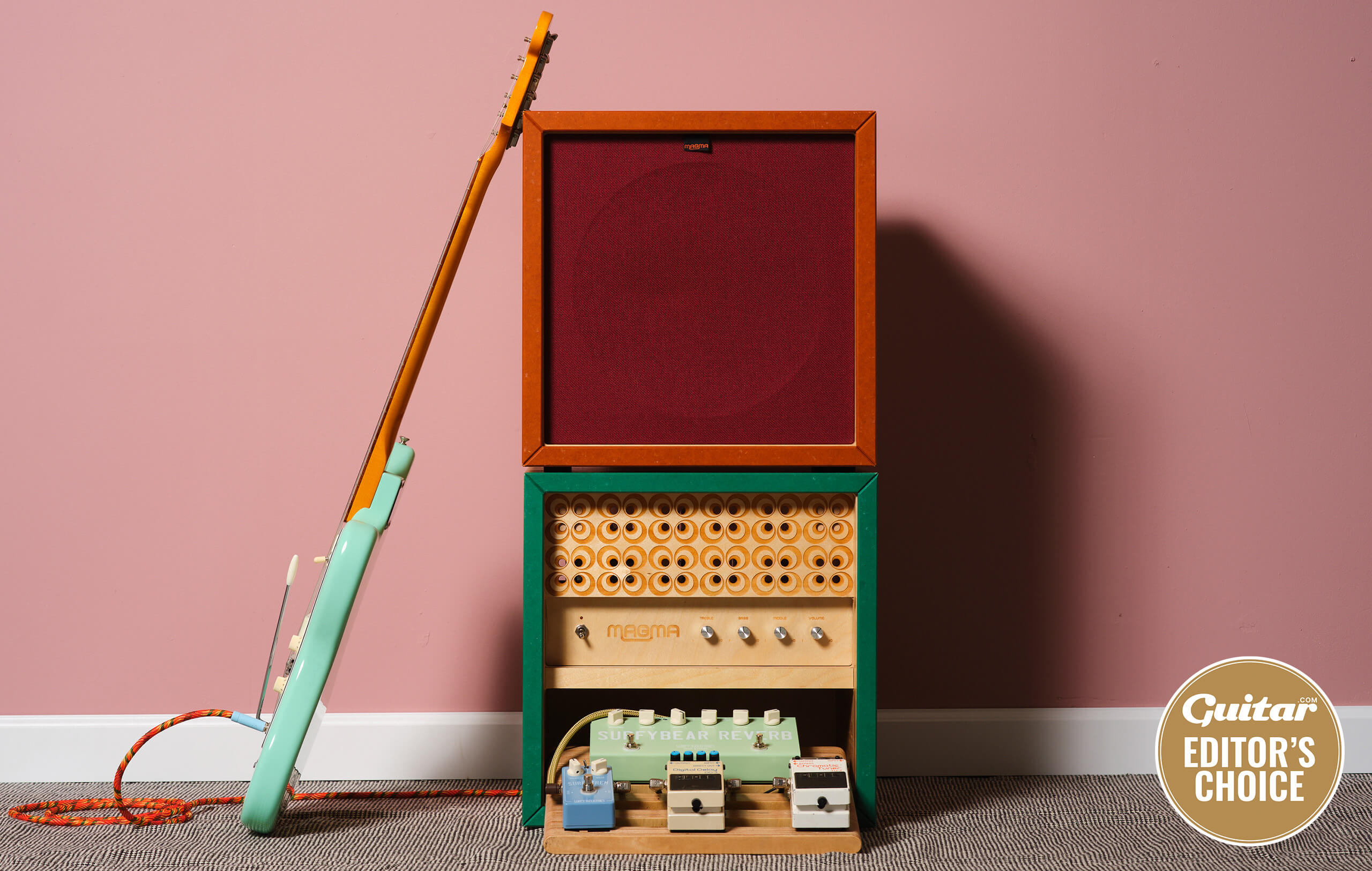
Review Overview
Our rating
9
Our verdict
Guitars are objects of desire. Pedals can be too, sort of. But amps are boxes, usually black, and all we can really say is that some of them are a bit less ugly than others. So what are we to make of the Magma Amplification Overflow?
- READ MORE: Chase Bliss Generation Loss MkII review: A digital effect to make everything sound extra-analogue
Well, it is definitely an amp – a handwired 18-watter powered by a pair of 5881 output valves, built in a small workshop outside Bristol. But what sets it apart is its distinctive bare plywood design, with hot-swappable fabric covers and snap-on magnetic frames in a range of striking colours. The idea is not to tuck this device into a discreet corner of the spare room, but to give it pride of place in the lounge where everyone can enjoy its chic lines. In short, this isn’t so much amplification as noisy furniture.
Oh, and we haven’t even mentioned the integrated pedalboard storage yet. The amp comes with a matching plywood board, and there’s a space to stow it beneath the chassis. This means all your battered pedals and straggly wires are kept out of sight – and, as a bonus, creates a square shape for the head to match Magma’s equally handsome 1×12” speaker cabs.
There’s a Flow model without the pedalboard bay for £150 less, which looks only slightly less amazing, but Magma sent us the flagship model plus one of the cabs and a selection of fabric grilles and frames to mess about with – if you’re buying an amp or cab, you get one of each in the colours of your choice; extras are £20. (Note that a frame is made up of four individual strips, so you can even mix them up if you’re a real design maverick.)
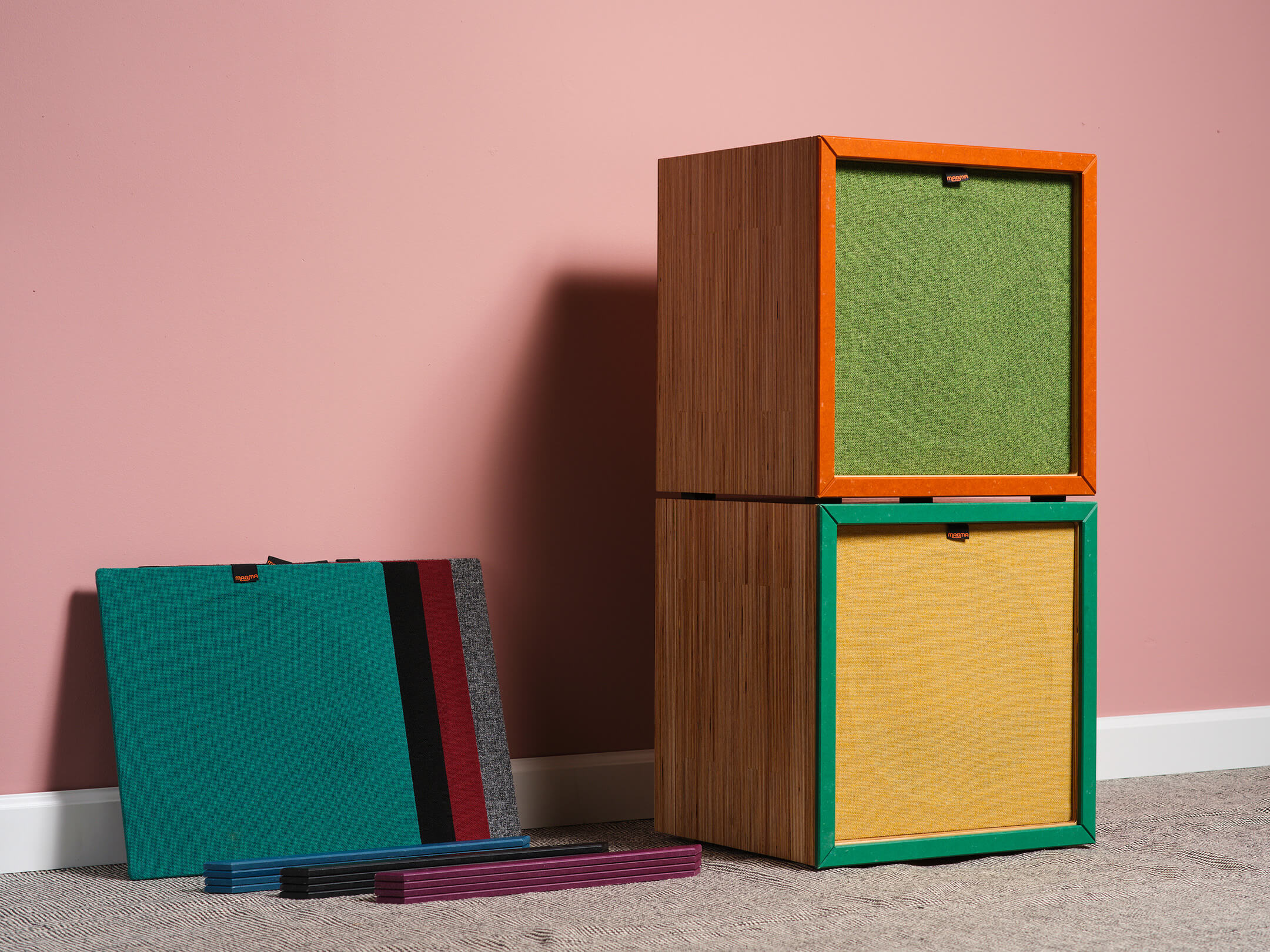
Now, down to business. The front panel has been kept as minimalistic as possible, with just a power switch, a three-way tonestack and a volume control. Yep, there isn’t even an input for your guitar here – that’s hidden round the back, alongside the speaker output, to ensure zero visible dangliness.
There’s no rear grille or cage so the five valves are on display from the back, rising from a ventilated metal panel embedded in the top of the wooden chassis. Below that we see a cable port at the back of the pedalboard bay, and that leads us down to the speaker cabinet.
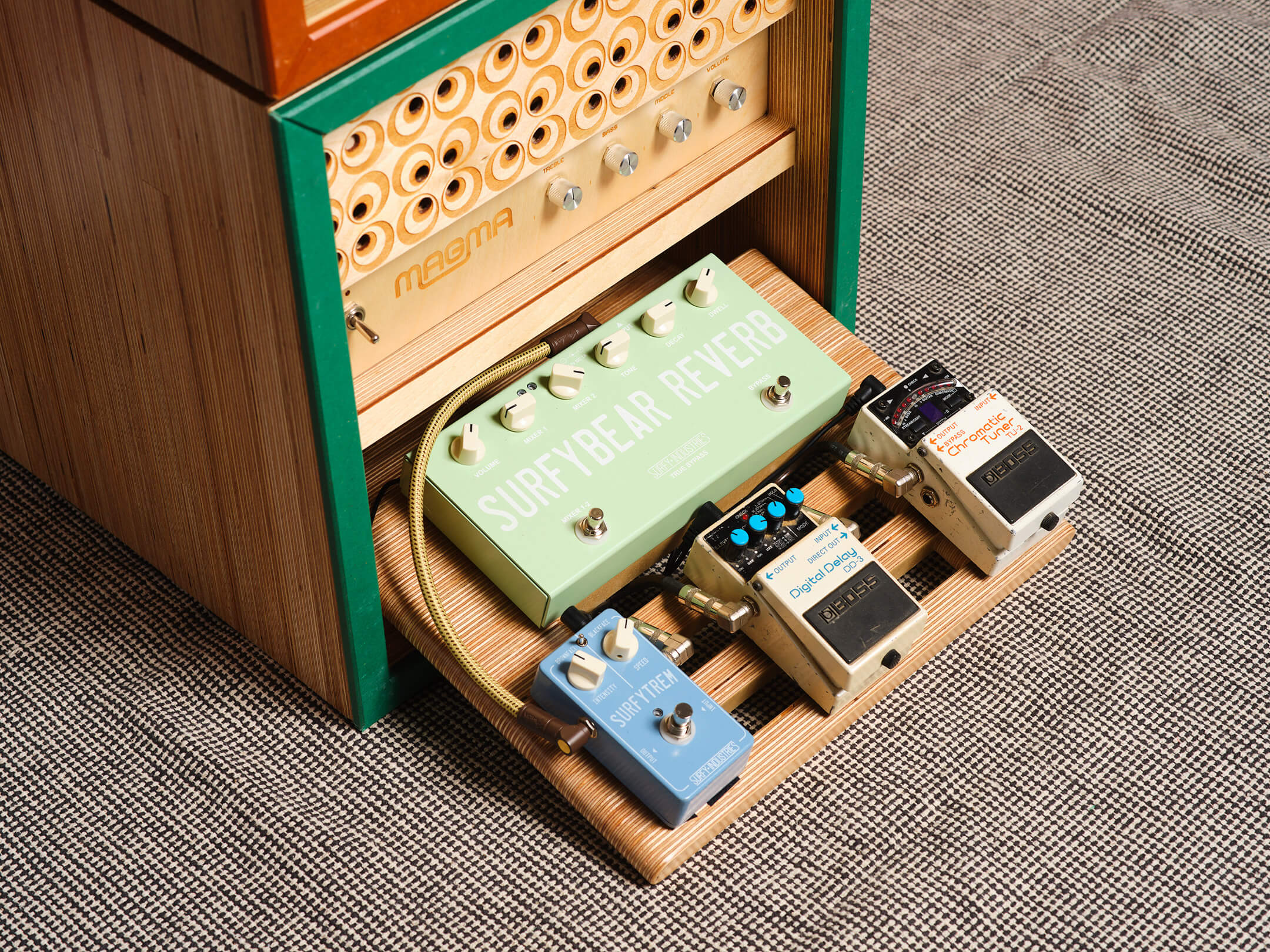
Fitted with an easily removable rear panel for swapping between open-back and closed-back use, this tidy box has an output as well as an input, so you can add more cabs in series. Ours has an Eminence Cannabis Rex, which is an excellent speaker, but that’s another thing the customer can specify. The unloaded starting price is £499.

And then we come to the pedalboard – a simple enough affair with five cable slots and two sturdy feet integrated into the structure at the back. Obviously stompboxes are not included (imagine!), but for demonstration purposes ours has come fully populated… and we’re not complaining. Along with a Boss tuner and a yucky old DD-3 delay, we find a couple of fun-looking units from Surfy Industries: a SurfyTrem dual-mode tremolo, and a SurfyBear Reverb that pretty much fills the top half of the board.
Not fussed about authentic spring-driven reverb? If you’re using compact pedals with top-mounted jacks, you should fit eight on there without too much difficulty.
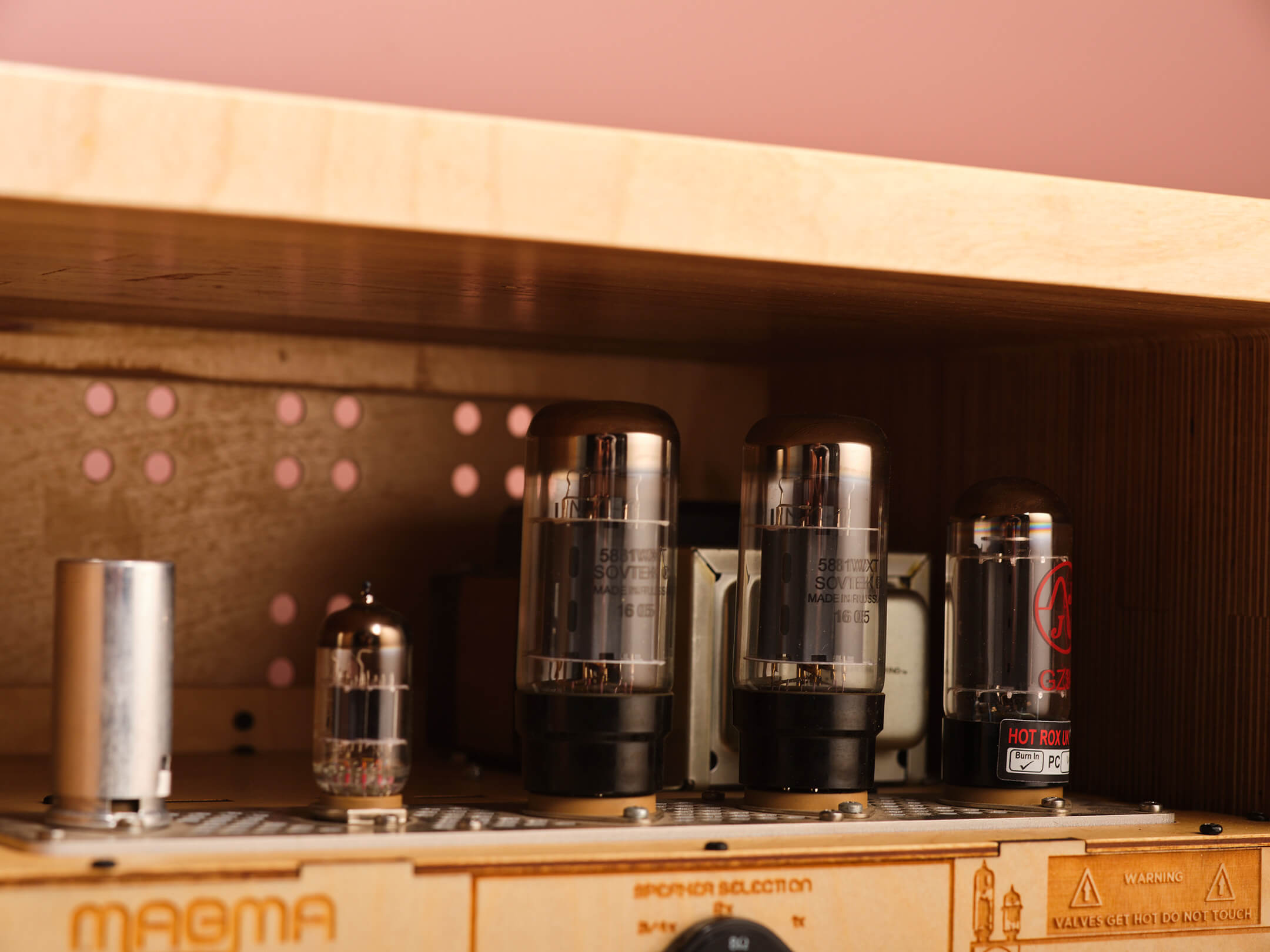
In use
Don’t worry, we’re not going to spend the second half of this review exploring different colour combinations – although, for the record, we do really like the ‘Kermit Green’ cover with a purple frame. And it is worth noting that this modular system works well – most of our fabric grilles aren’t even magnetic because they’re early prototypes, but the fit is so snug that they feel completely secure anyway. The frame strips, meanwhile, clip into place with satisfying accuracy.
Okay, time to stop fussing over interior design choices and do some guitar playing. With amp, cab and effects pedals all wired up for action, we flip the switch and the Overflow bursts into life with… virtual silence. It’s a genuine “Is this thing working?” moment, but turning up the guitar’s volume confirms there’s nothing wrong – it’s just a very, very low-noise amp.

As to what kind of amp it is, the clue was there all along in the built-in pedalboard storage: it’s all about big clean tones that work well with pedals. And when we say ‘clean’, we mean our Telecaster doesn’t push it into overdrive even at full blast, while a Les Paul can only coax out a hint of crunch in the low end.
But there are plenty of tones to explore within this dirt-free realm. Set all the controls at around two o’clock and it’s very pretty indeed, with all the jazzy refinement you might expect from something that looks this grown-up. The bass is tight – no surprise given the dimensions of the cab – but it’s perfectly well rounded, while the top end sings out with classic black-panel clarity.
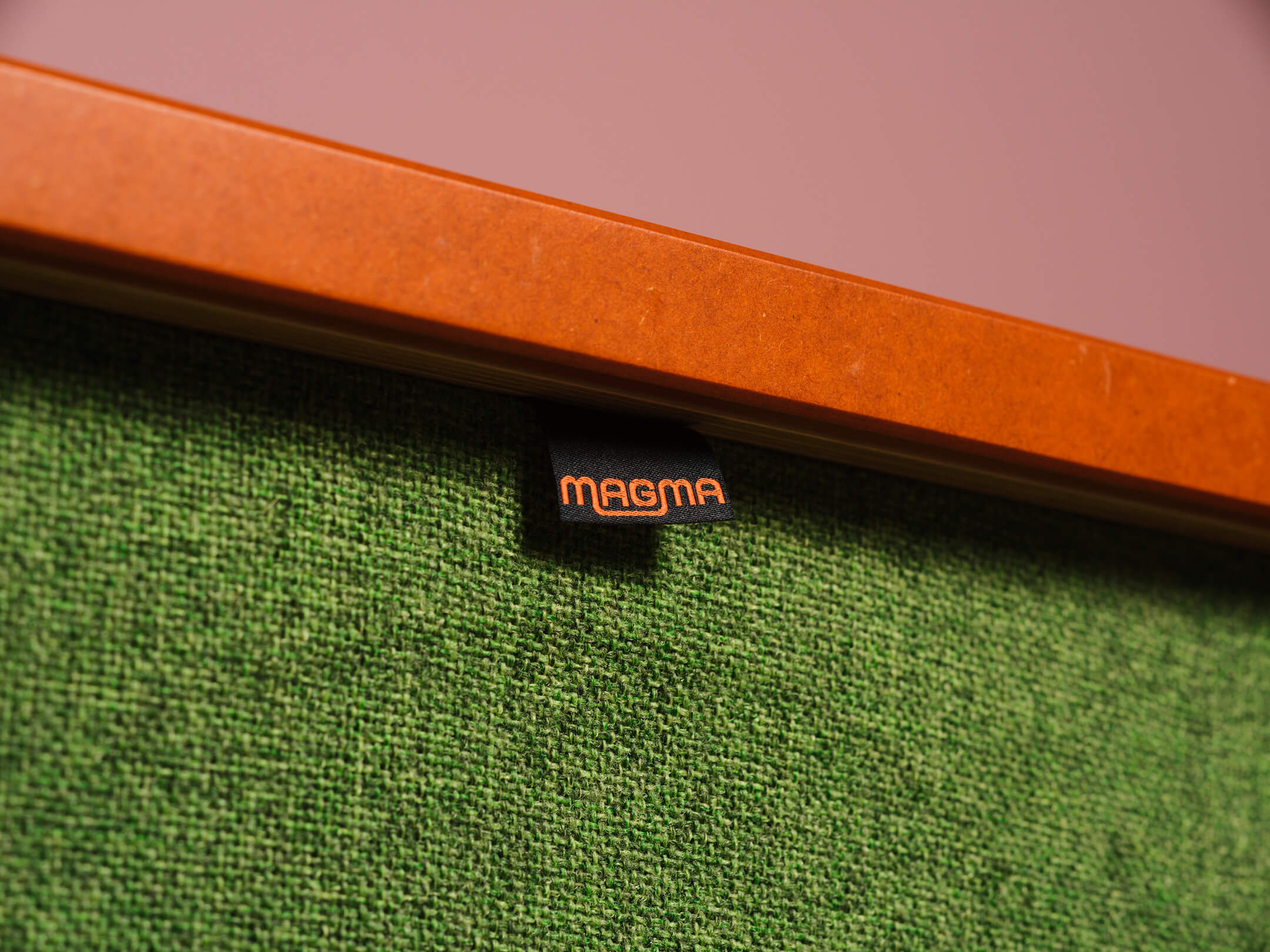
Magma has clearly found a magic formula with the tone controls, as all three of them can be yanked fully up or down in a way that has a dramatic effect on the amp’s voice but never gets unmusical. You can even max out the treble, with a Tele, and not feel the need to lie down with your head buried in a pillow afterwards.
Part of that might be down to the fact that the Overflow doesn’t get very loud. Certainly it won’t frighten the neighbours as readily as most 18W amps… but then, you’ll never get cleans as pure as this from a Marshall 1974. Anyway, there is an even quieter 12W option in case you live upstairs from a funeral parlour.
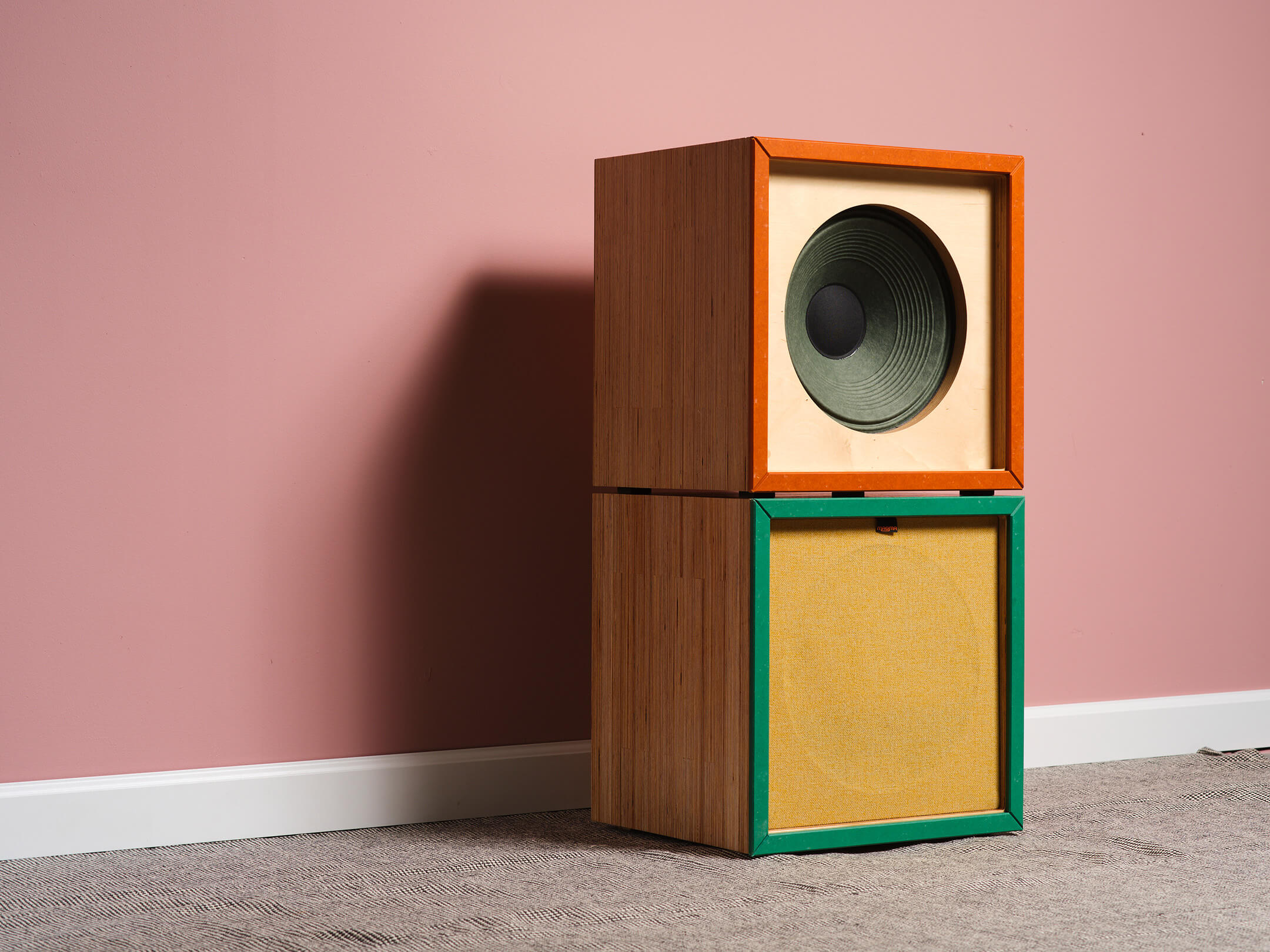
That lack of grit does, as promised, make this a fine pedal platform. We should spare a word for the SurfyTrem here – and that word is ‘luscious’ – but what we’re really thinking of is dirt machines. Your Tube Screamer might prefer something with a bit of breakup to build on, but for more transparent and/or higher-gain stompers it’s a perfect companion. All of which just leaves the question of who’s going to buy the Magma Overflow… and why.
Is it loud enough to gig? With today’s PA systems it surely is, but we can’t imagine many owners being happy to cart their precious work of art down to the local dive and watch as other bands rest their pints on it during soundcheck. It should also be noted that there’s nothing to stop the pedalboard sliding out and hurtling to the floor if it’s tipped forwards.
So this is really an amp for home practice and recording. Nothing wrong with that – just make sure the rest of your house is smart enough not to embarrass it.
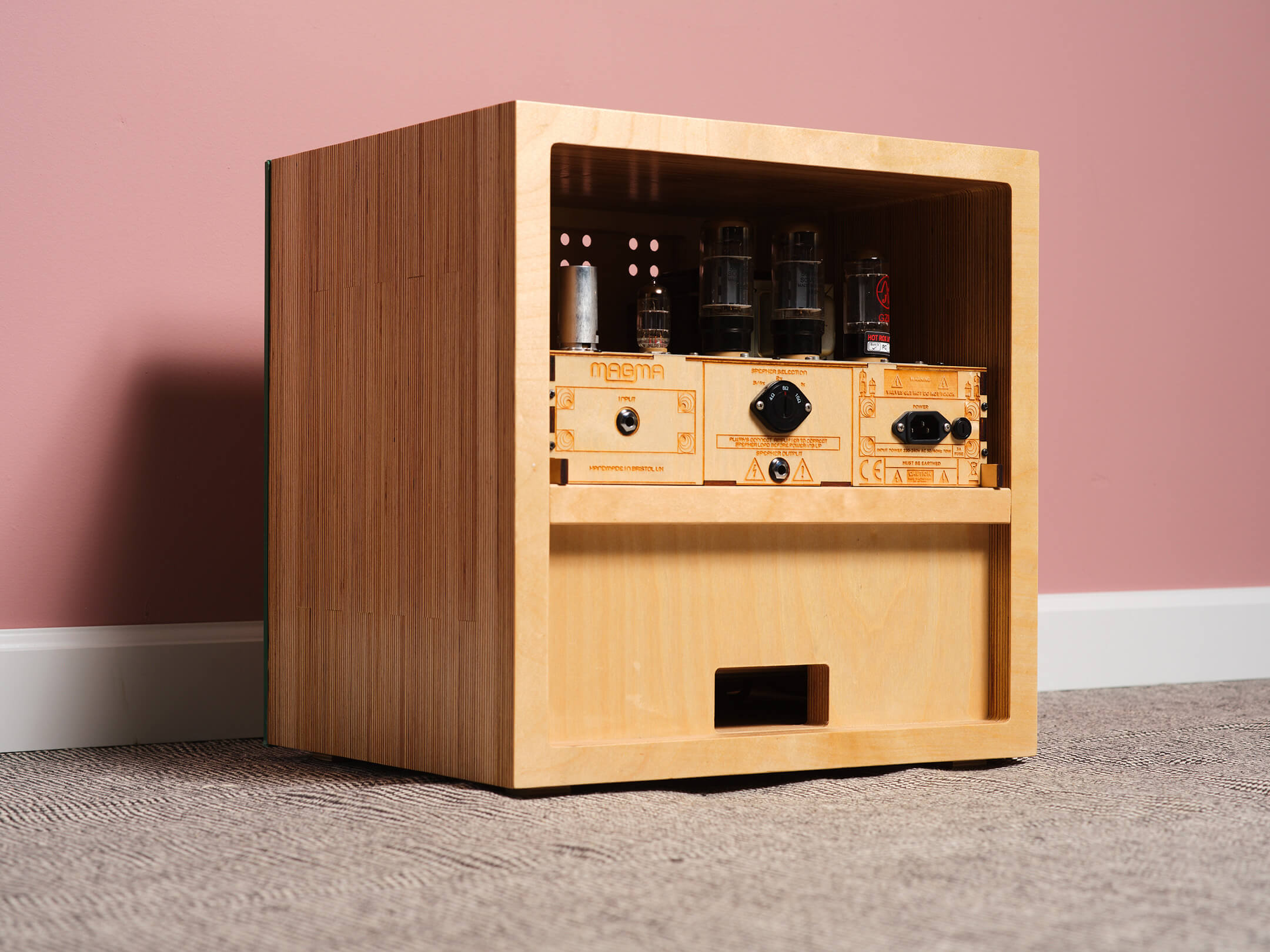
Key Features
- PRICE £1,950
- DESCRIPTION Single-channel all-valve head with pedalboard and storage bay, made in the UK
- POWER RATING 18W
- CONTROL PANEL Power switch, treble, bass, volume
- REAR PANEL Guitar input, speaker output
- VALVES 2x 12AX7, 2x 5881, 1x GZ34
- DIMENSIONS 420 x 420 x 350mm
- WEIGHT 17.5kg/38.6lb
- CONTACT magmaamplification.com
Like this? Try these
- Carr Super Bee 110 £2,549
- Fender ’65 Deluxe Reverb £1,609
- Strange Audio Electronics Lux Plus $1,999




